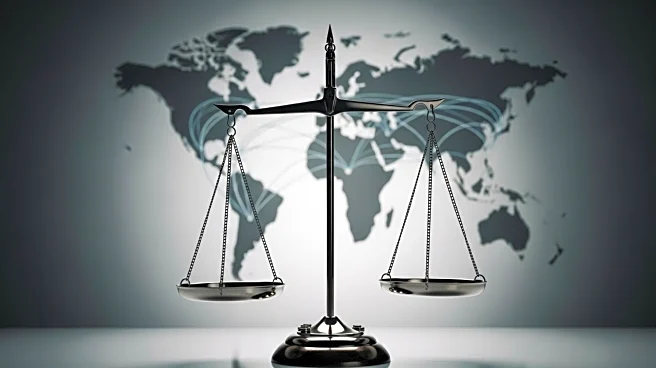What's Happening?
A recent ruling by the U.S. Court of Appeals for the Federal Circuit has declared most of President Trump's 2025 tariffs illegal, citing that Congress did not intend to grant the president broad authority to impose tariffs under the International Emergency Economic Powers Act (IEEPA). This decision, which is stayed until October 14 for Supreme Court review, has introduced significant uncertainty in global trade dynamics. The ruling has already led to a 12.9% drop in the S&P 500, reflecting market sensitivity to policy changes. Industries reliant on global supply chains, such as technology and automotive, face increased risks due to higher input costs from tariffs on materials like steel and aluminum.
Why It's Important?
The court's decision has far-reaching implications for U.S. trade policy and global markets. If upheld by the Supreme Court, the ruling could lead to a reversal of tariffs, potentially requiring the U.S. government to refund billions in collected duties. This would reshape trade relations and impact multinational corporations' strategies. Sectors like utilities and healthcare, less exposed to international trade, have seen increased investor interest as defensive plays. The ruling highlights the legal and economic complexities of tariff policies and their influence on market stability and investment strategies.
What's Next?
The Supreme Court's upcoming decision will be pivotal in determining the future of U.S. tariffs and trade policy. If the court upholds the lower court's ruling, the administration may need to explore alternative legal tools to impose tariffs, potentially leading to further legal and diplomatic challenges. Investors are likely to continue diversifying their portfolios, focusing on low-volatility sectors and geographic diversification to hedge against ongoing uncertainties. The outcome of the Supreme Court decision will be closely watched by businesses, policymakers, and international trade partners.











